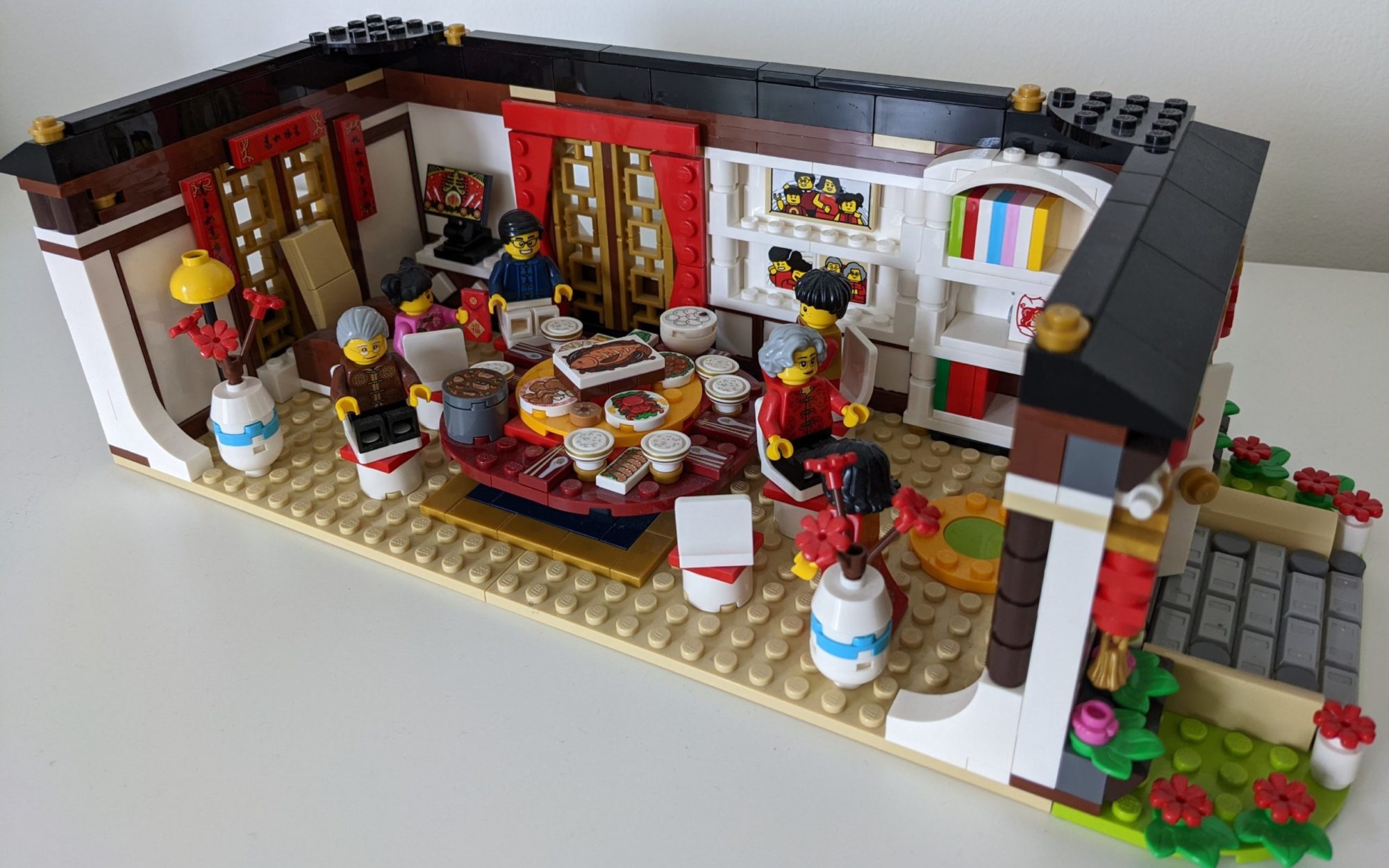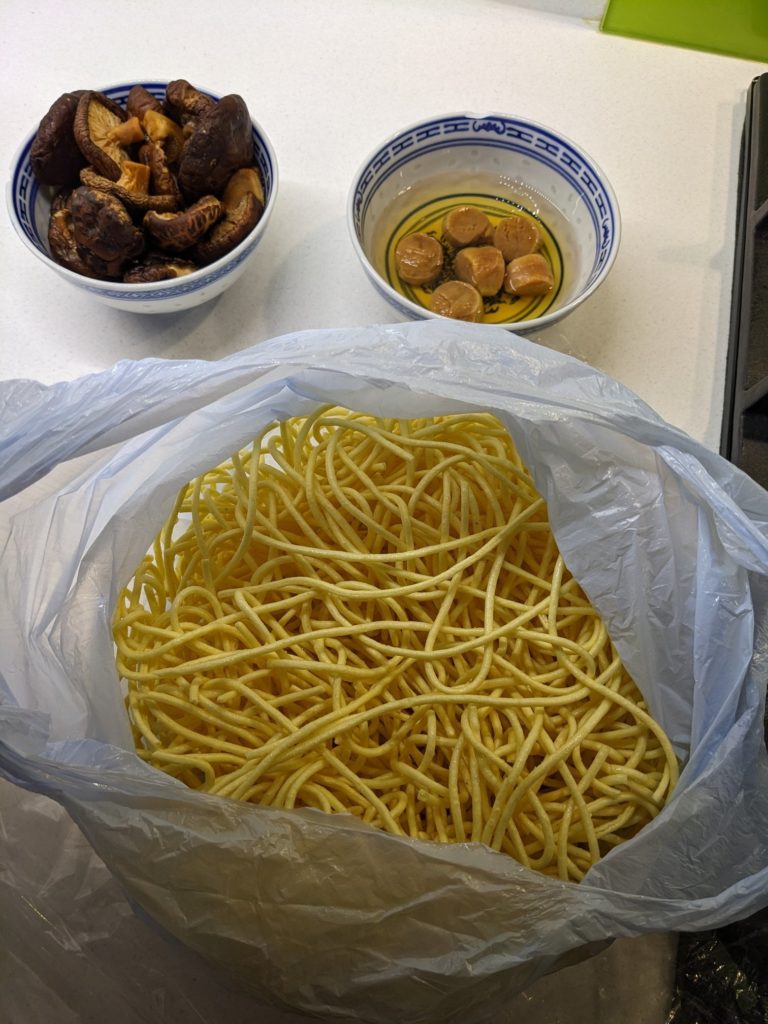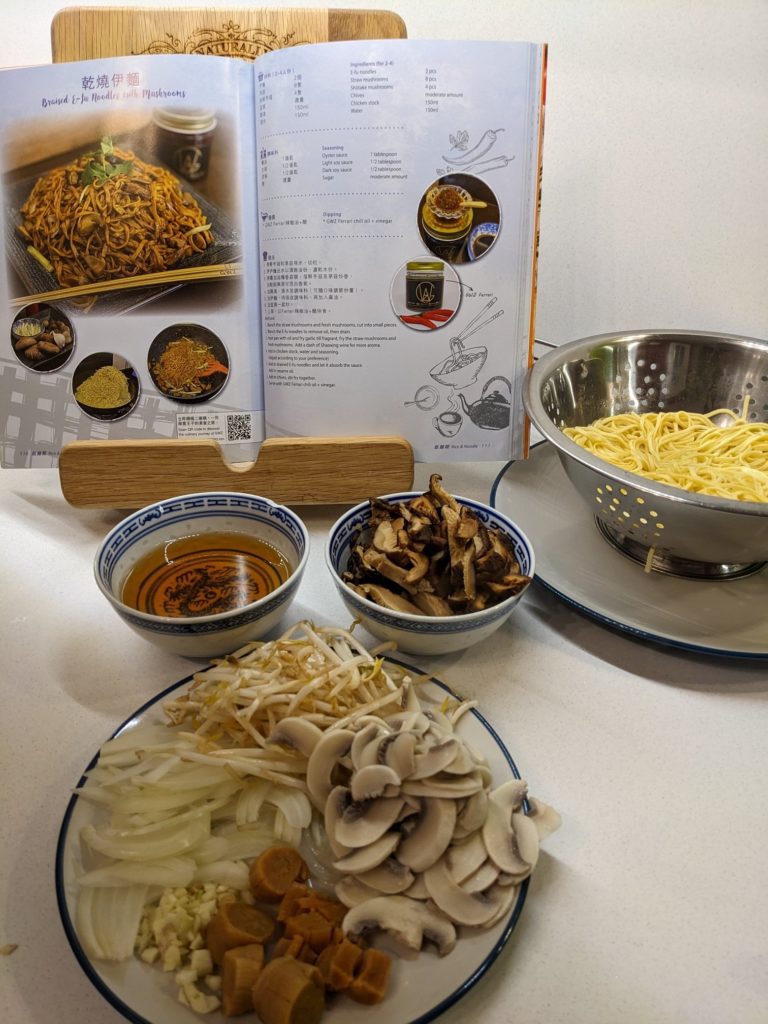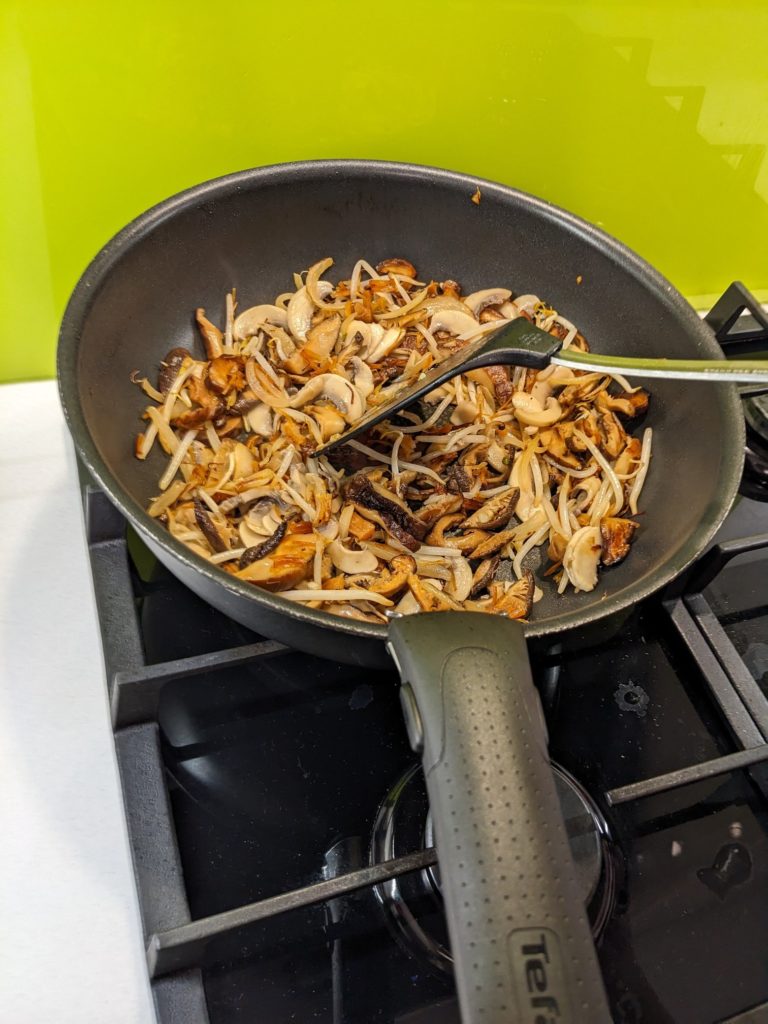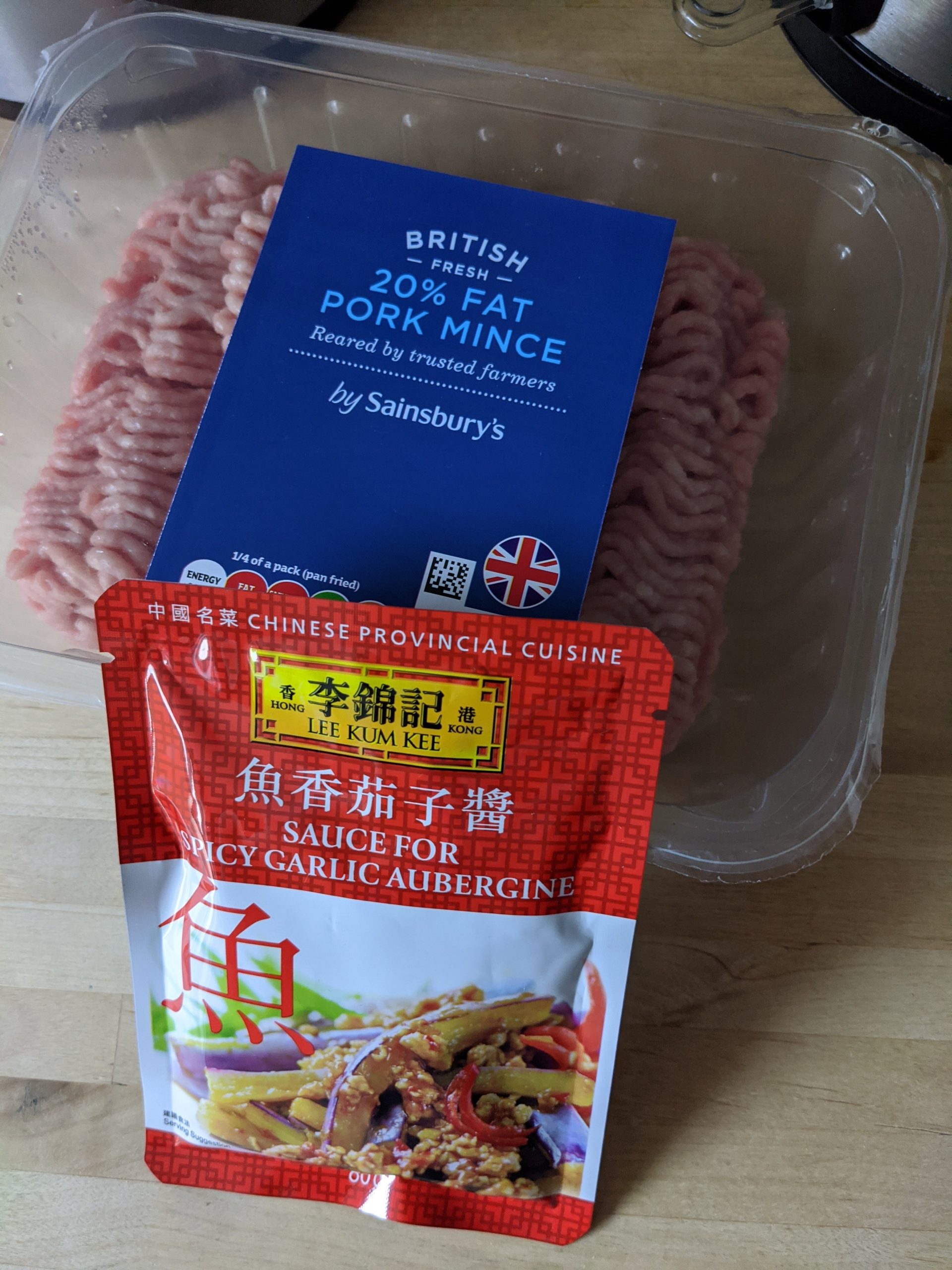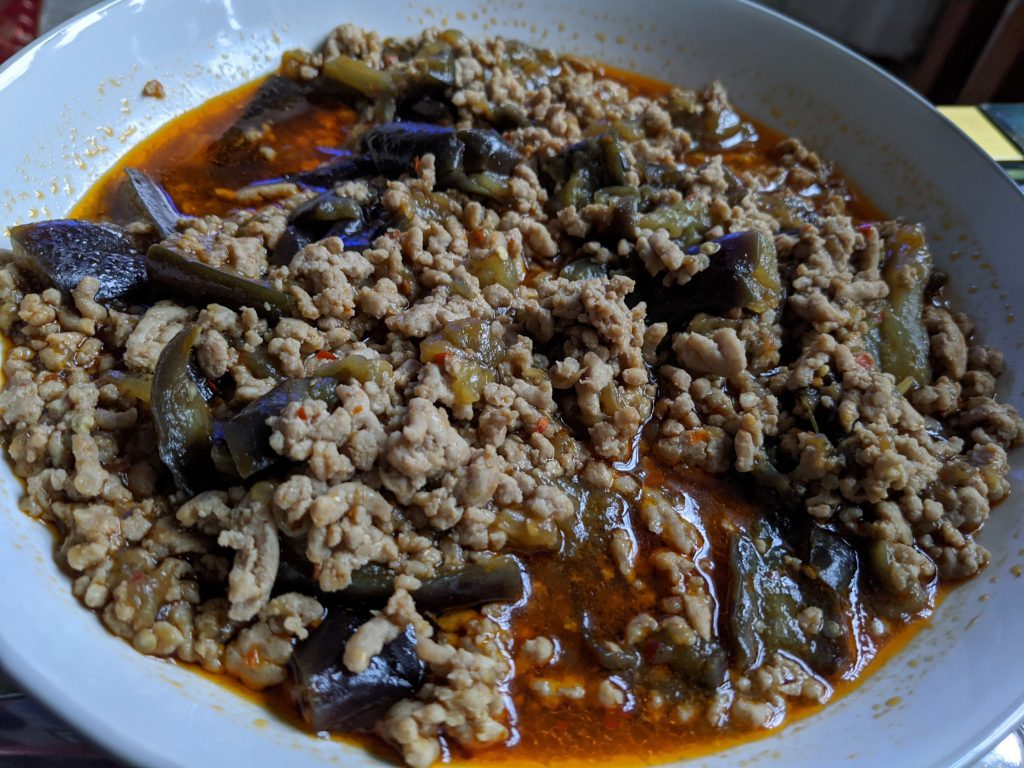I will confess that cooking Chinese food is not my strong suit. I therefore have to usually rely on cook books if I wanted to make anything slightly authentic. At least to give me an idea and guide to what I’m doing.
I was very excited to finally get my hands on my very good friend George Wong’s (Instagram) cookbook during my recent, long overdue trip to Hong Kong.

As the name suggests, it has a staggering 88 recipes in this treasure trove of authentic Cantonese and Chiu chow dishes that have been perfected by George over the years. Ranging from Chinese soups (broths), main dishes such as salted egg prawns, sauces, to his signature dish – Hainese Chicken 🐔.
On this occasion, I was lucky enough to get my hands on some fresh E-fu noodles from Hong Kong. E-fu noodles (伊麵 – yee mein) is a flat Cantonese egg noodles made of wheat floor that are sold in rounds in a stack. They frequently feature as part of Chinese banquets as well as the accompaniment to lobster dishes as they soak up sauces quite well whilst still retaining their texture.
So I had some E-fu noodles and needed to make a quick dinner midweek after putting the 👶 to bed which took quite a while that particular evening. I decided to look through George’s cookbook which had a recipe for Braised E-fu noodles (乾燒伊麵) as I had never cooked with yee mein before and didn’t even know you had to parboil it to soften it and get rid of the oil that coats the dried rounds of yee mein. So that was a really useful tip.
I decided to also raid my store cupboard and found some dried Chinese mushrooms (東菇) and dried scallops (also know as Conpoy or 瑤柱). These had to be soaked beforehand to rehydrate them. I kept the soaking liquids from the mushrooms and scallops to use in the recipe instead of water and stock as suggested by the recipe.
And then it’s just a case of getting all the ingredients chopped and ready before starting to cook which is a must for any Chinese recipes involving frying as you need a hot wok which cooks everything very quickly. So if you’re having to chop your mushrooms up whilst other ingredients are sauteing, the other ingredients will burn.
As usual, I deviated from the recipe a bit but kept to the spirit of it using mushrooms. It was also helpful to have a guide on the quantities for the sauce consisting of oyster sauce, sugar and soy sauce. But as mentioned earlier, rather than using stock and water, I used the flavoured soaking water from the Chinese mushrooms and dried scallops which added the layer of umami taste to the noodles.
When using dried scallops in this way, always make sure you fry it off with a little oil with your starter ingredients such as onion and garlic. You’ll be able to smell it once the scallops heat up. Same with the Chinese mushrooms before you add any other fresh mushrooms you might be using in your recipe.
The whole process including parboiling the yee mein took 15-20 minutes (Chinese mushrooms and scallops were soaked beforehand). Perfect midweek dinner.
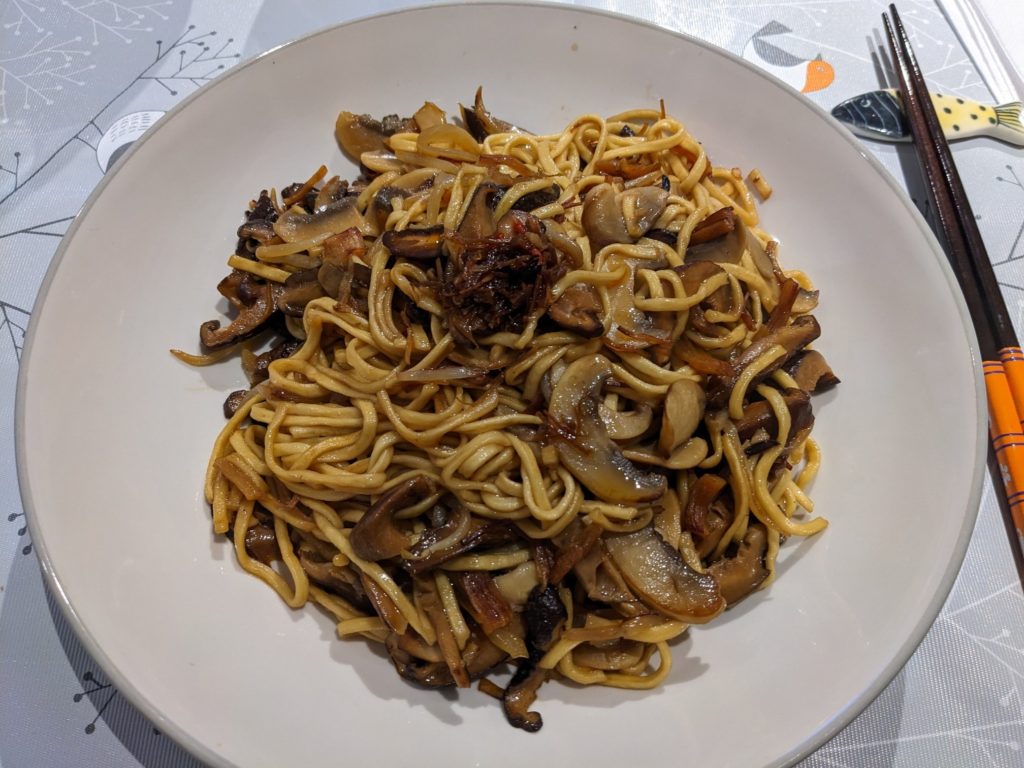
Can’t wait to try another recipe from this cook book soon!
Happy eating! 🤤🤤🤤🤤🤤
